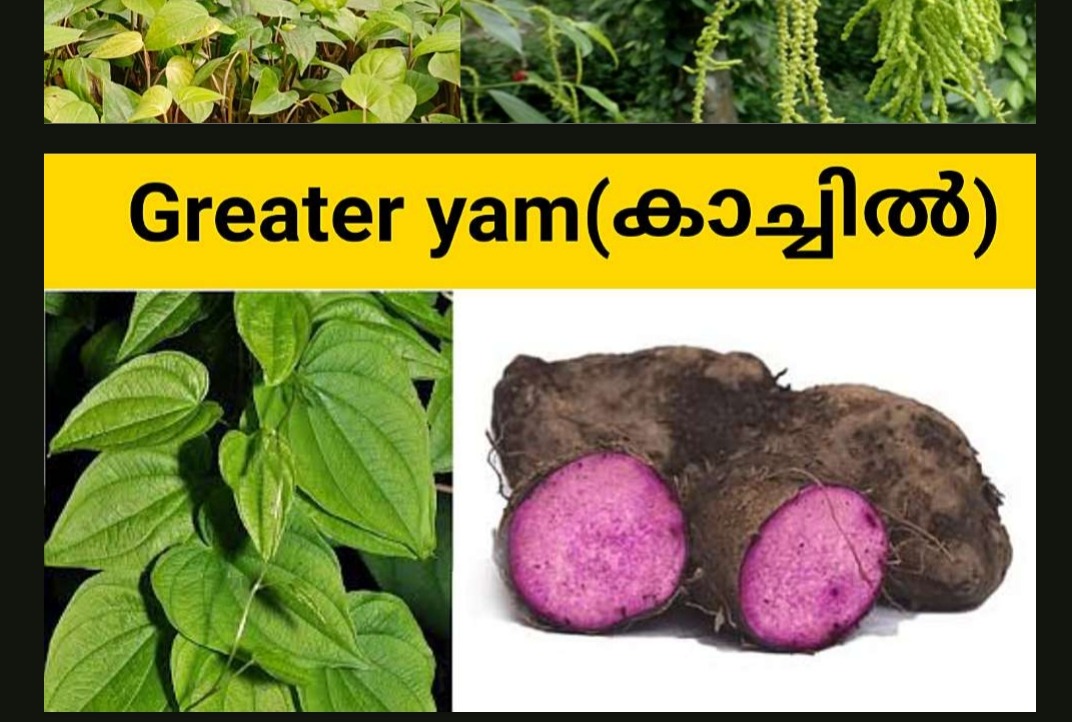Grater yam
- Category : Agro pro
- Provider : RESHMI AGRICULTURAL NURCERY: VATTOLI
- Address:
- reshminursery7@gmail.com
- 9744477770
- VATTOLI PIN: 673507


Greater yam, scientifically known as Dioscorea alata, is a widely cultivated tuber vegetable and a significant staple food crop, particularly in tropical regions. It's also commonly called water yam, winged yam, or purple yam (though not to be confused with the Okinawan sweet potato).
Key characteristics include:
* Growth Habit: It's a large climbing vine, often reaching up to 15 meters in height, with characteristic quadrangular or "winged" stems that twine anticlockwise.
* Tubers: The edible part is the underground tuber, which varies greatly in size, shape, and color. They can be cylindrical, branched, lobed, or even fan-shaped, and can weigh anywhere from 5-10 kg, with some special cultivation practices producing much larger tubers. The flesh color ranges from white, cream, or yellow to pink or vivid violet-purple.
* Leaves: Its leaves are typically large, ovate to heart-shaped (cordate), and arranged alternately or oppositely on the stem.
* Propagation: Greater yam is primarily propagated vegetatively using pieces of the tuber or occasionally by aerial tubers called bulbils that form in the leaf axils.
* Nutritional and Medicinal Value: It's a rich source of carbohydrates and minerals. Some varieties also contain anthocyanins (giving them their purple color) and other bioactive compounds with potential anti-inflammatory, antibacterial, and antioxidant properties. It has traditional medicinal uses and is being explored for its pharmaceutical potential.
* Cultivation: It thrives in warm, humid climates with well-drained, fertile soil and cannot tolerate frost.
0 reviews for Grater yam
Add a review